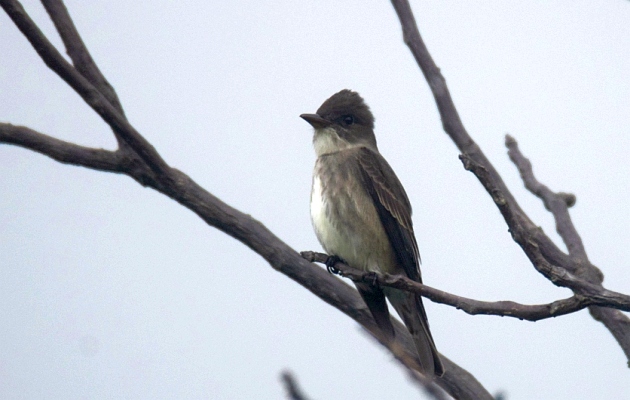
Bird names say much about human perception, they can also give us insight into the people who invented names for official bird descriptions. Warblers might not always warble but whether by constant use of the word or because it really is a good English term for members of the Parulidae, “warbler” seems to fit. Sunbittern also works because what else could that bizarre and ancient bird be called? Rail-Heron? Heron-Rail? Painted Water Stalker?
Some names are clearly descriptive and thus make one feel good about saying them; woodpecker and grosbeak come to mind. Others might not obviously describe the appearance of a bird but still fit the bill and so we still like them very much. One such example is “pewee”. Pewee sounds like something small, something seemingly insignificant but with a certain degree of charm. That sure sounds like a pewee to me because what better way to describe a bird that sings its name on lazy beautiful days in warm summer woods?
At least Eastern Wood-Pewees do that but what about the other pewees? Are they just as “pewee”? In terms of song, no, but “pewee” would still seems work for any member of the Contopus genus for they have other, equally charming attributes. These include a feathered crest, hanging out on an exposed perch from which they occasionally sally into the air, and exhibiting a rather dull yet dapper appearance.
In Costa Rica, we have our pewees, 6 species of them. Three live and breed here, two migrate through the country in large numbers (one of those also breeds here in small numbers), and another migrates through and winters in Costa Rica. This is how these charming flycatchers roll in southern Central America.
Eastern Wood-Pewee
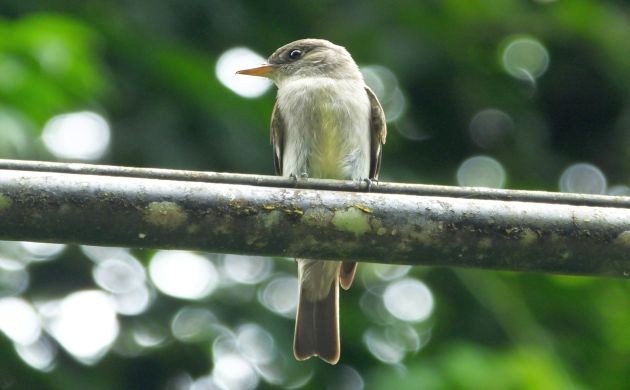
The original pewee is one of the migrants that passes through in large numbers. Millions of pewees fly over and stop in Costa Rica on their way to and from South America. They won’t build a nest or look for a mate but other than that, their behavior in Costa Rica is pretty similar to that of their breeding grounds.
We do hear them say their name and that helps because if not, they can be super tough to separate from the Western Wood-Pewee. At the height of migration In Costa Rica, Eastern Wood-Pewees can show up in all sorts of places but are abundant in the Caribbean lowlands. In this part of country, every other post and branch in edge and forest gaps can seem to host an Eastern Wood-Pewee. Not all of them call but enough do to remind me of summer sojourns in places like Letchworth State Park, and the forests of the Niagara frontier and eastern Pennsylvania.
Western Wood-Pewee
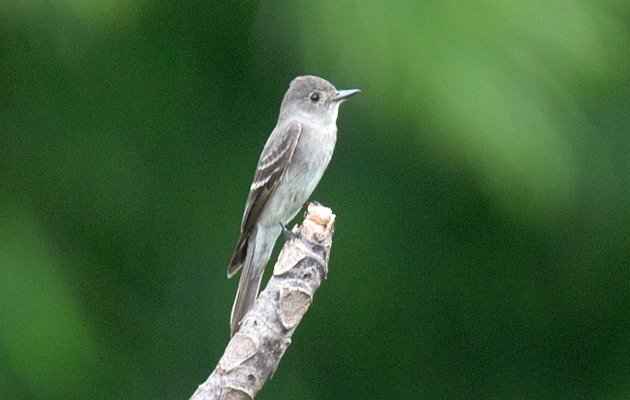
The WEWP is the other pewee that moves through Costa Rica in numbers. Although we can find them just about anywhere, more seem to pass through highland habitats and in lesser numbers than their eastern cousins. Luckily, they also call frequently enough to keep a birder from pondering over the subtleties of pewee appearance. They also do the usual pewee thing of sallying now and then from nice exposed spots both in open and forested areas.
Tropical Pewee
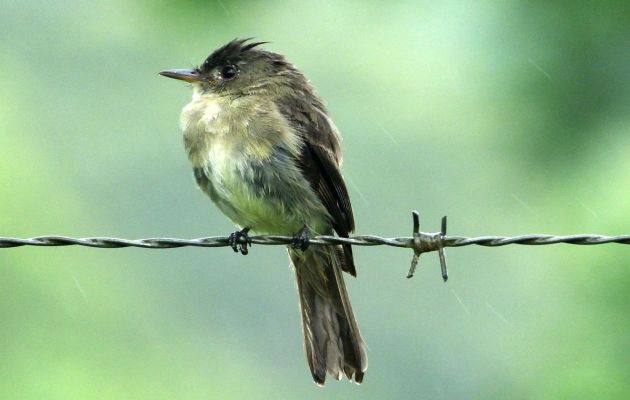
This appropriately named bird is just what its name says. It acts and looks like a wood-pewee that decided to stay for a permament vacation. A common bird of hot, tropical habitats, it is very much an edge species. With that in mind, if you see a pewee inside the forest, that bird is much more likely one of the migrant wood-pewees than the Tropical Pewee. When birding in the humid lowlands, watch for it on fence lines next to pasture. If you see a bird that looks like a richly colored pewee with shorter wings and a burry call, say hello to the Tropical Pewee.
Ochraceous Pewee
This high elevation pewee only occurs in the mountains of Costa Rica and a smidgeon of western Panama. Yes, a cool endemic pewee! However, much to a birder’s chagrin, it also has the distinction of being one of the more challenging highland endemics to see. This is perplexing given that the bird has the same perch and sally moves as the other Contopus species but it’s true, the O. Pewee is a royal pain.
Compared to the other pewees, it seems to be much less common, a lot more lethargic, and less vocal. In my experience, it seems to sing more during the spring months and this of course is a great help in locating this unobtrusive bird. if you go looking for it, keep in mind that it can perch in the understory just as much as in the canopy.
Dark Pewee
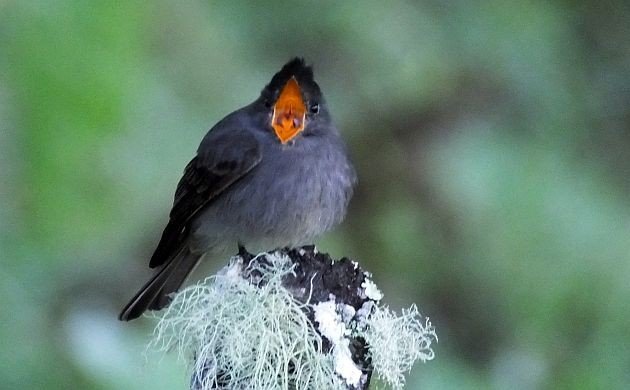
Another highland endemic, this bird lives in middle elevation cloud forest habitats and unlike the O. Pewee, is much easier to see. It seems to have rather low density populations but at least sticks to the typical pewee modus operandi of calling from nice, exposed perches. Watch and listen for its pipping calls in any middle elevation site with forest.
Olive-sided Flycatcher

Our final pewee is one that goes by “flycatcher” but don’t be fooled, this bird is an honest to goodness pewee. In Costa Rica, although you probably won’t hear the Olive-sided ask for three beers, it will act more or less the same way as it does up north. That means perching on a high point of a tree and making long sallies for insects. Whether because the Olive-sided a pewee that is rather easy to identify or because it migrates from boreal forests to Andean cloud forest, this is a seriously cool bird.
Soon, the migrant pewees will mingle with their resident cousins as they move back through Costa Rica. I look forward to seeing them sally from perches, hearing their lazy calls, and imagining where they might go for the summer.











As you say, Patrick, the name Pewee does sound like it refers to something small and charming. Which is why I have a particular fondness for the oxymoronic name of Mexico’s Greater Pewee! I did not realize those do not make it to Costa Rica.
Of course, the Mexican name of “José María”, which accurately imitates this species’ call, is pretty cool, too.
@Paul- Interesting to hear about the local name for the Greater Pewee. Similar to various species, Greater Pewee reaches northern Central America and is then “replaced” by a related species in southern Central America (which are endemic to Costa Rica and Panama), and yet another related species in the Andes. In this case, Dark Pewee and Smoke-colored Pewee.